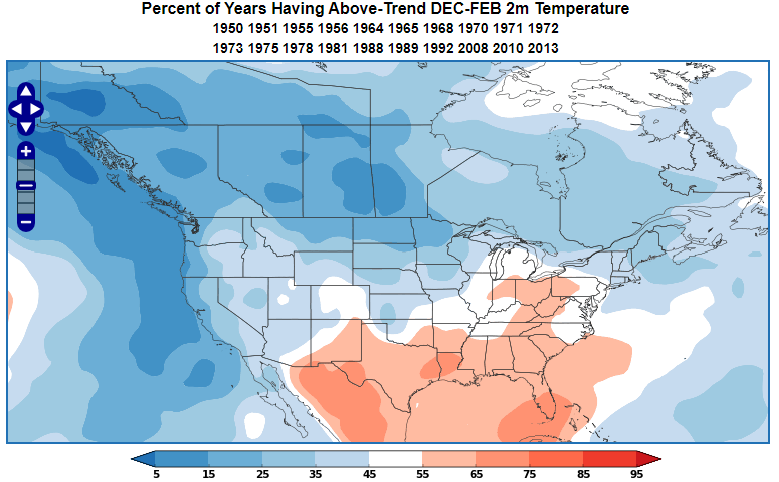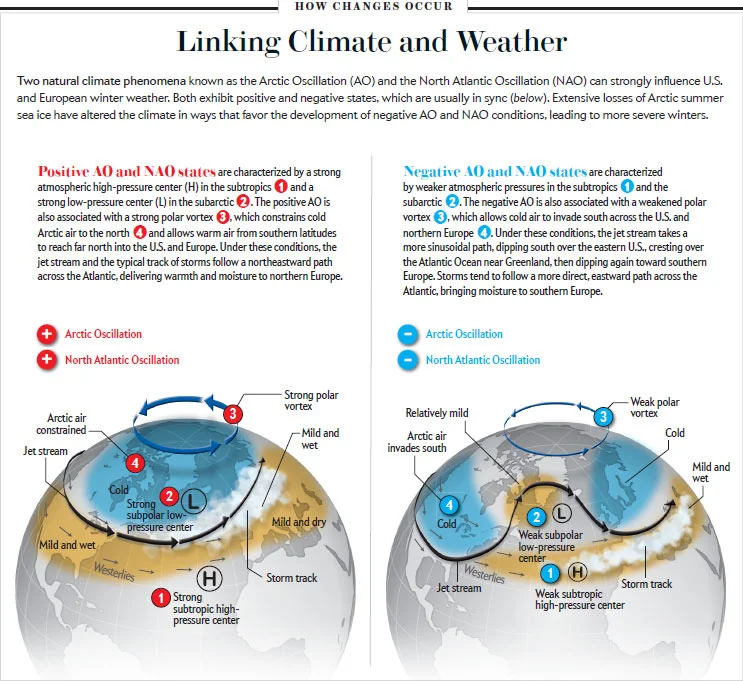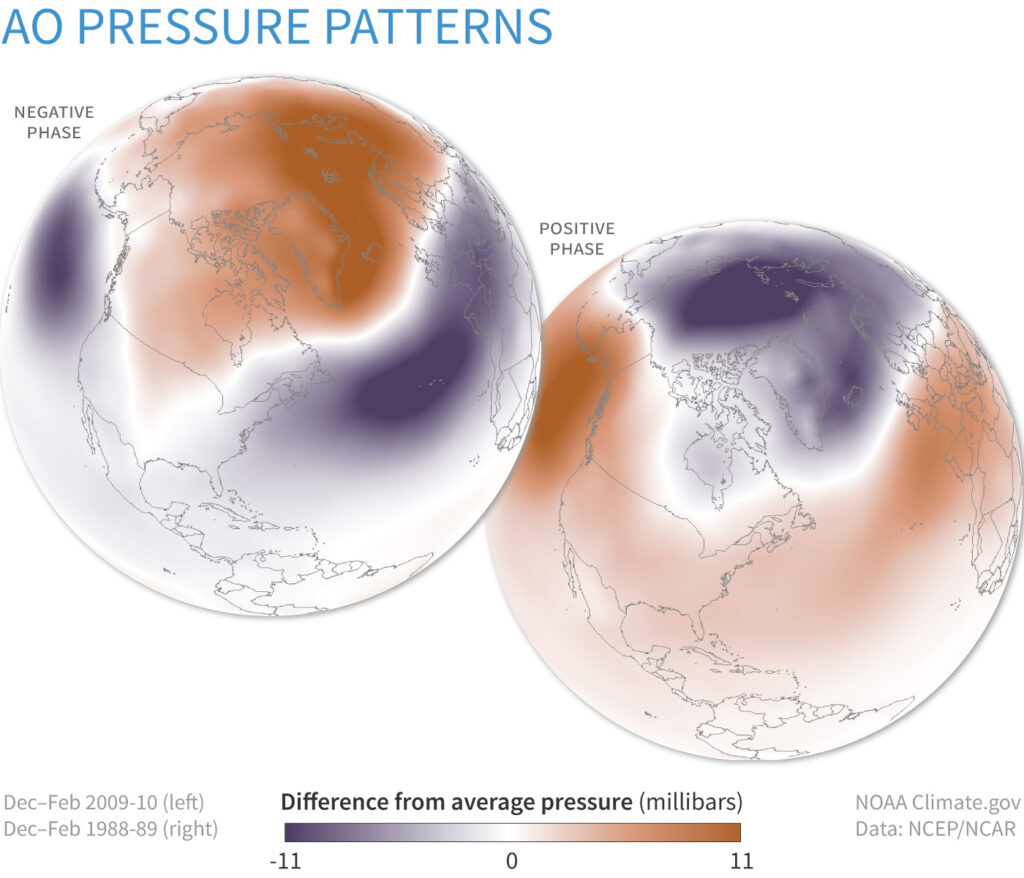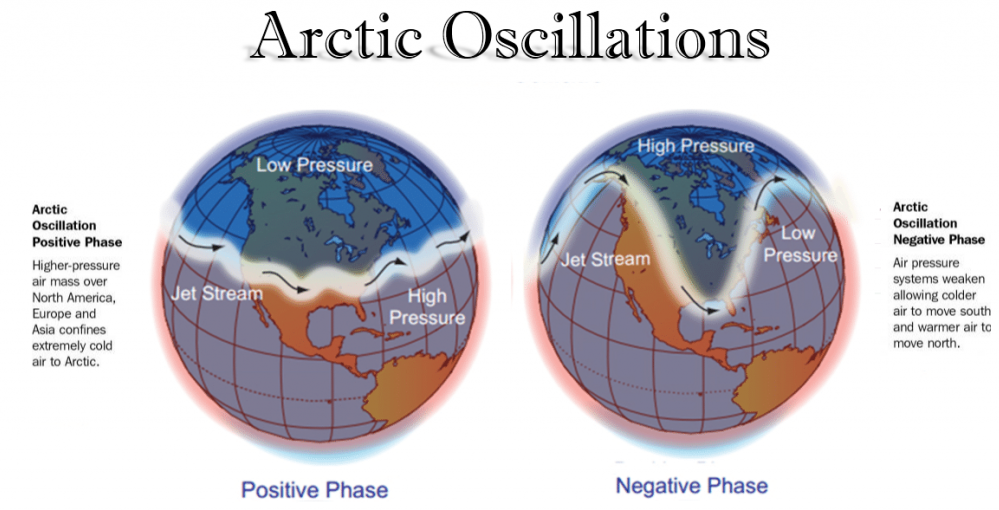During the negative phase of the WPO in wintertime, most of the lower 48 states are usually colder than normal. The exception is the Southwest which where winters are often warmer than normal.
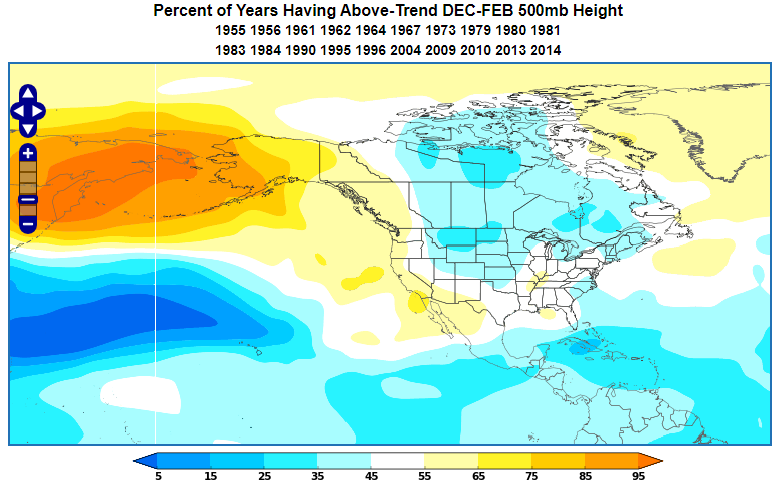
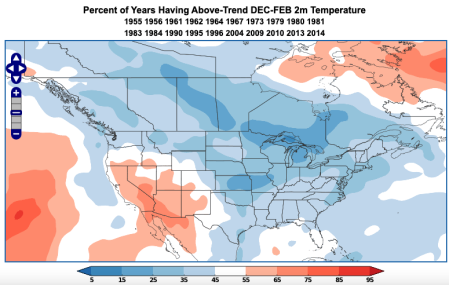
As we witnessed in December 2015, during the positive phase of the WPO in the wintertime, the North and East are usually warmer than normal. At the same time the Rockies and the West are more likely to see a cooler than normal winter (Figure 4).
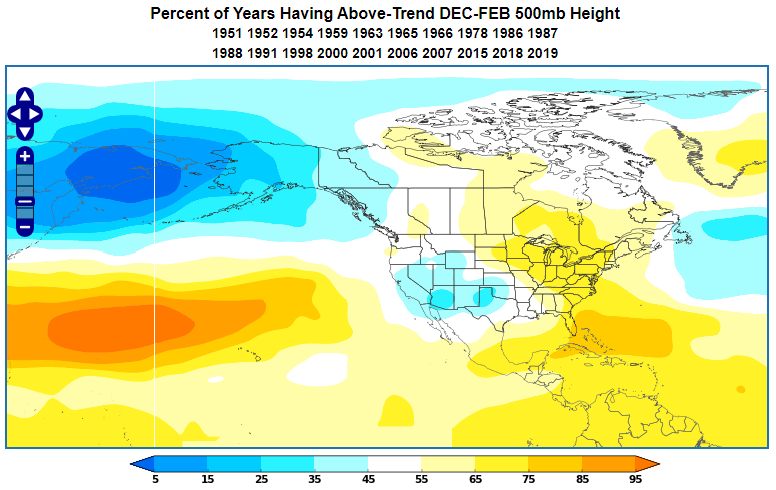
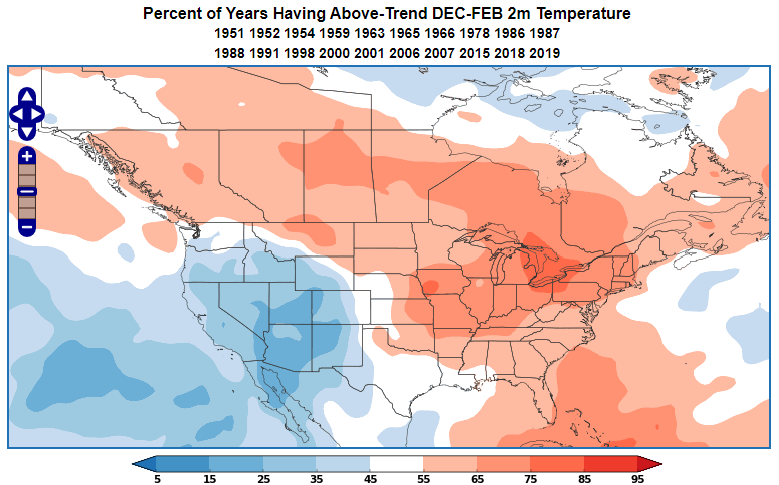
During the positive phase of the EPO in the wintertime, much of the lower 48 states are likely to be warmer than normal, but California and the Southwest deserts are usually cooler than normal (Figure 4).
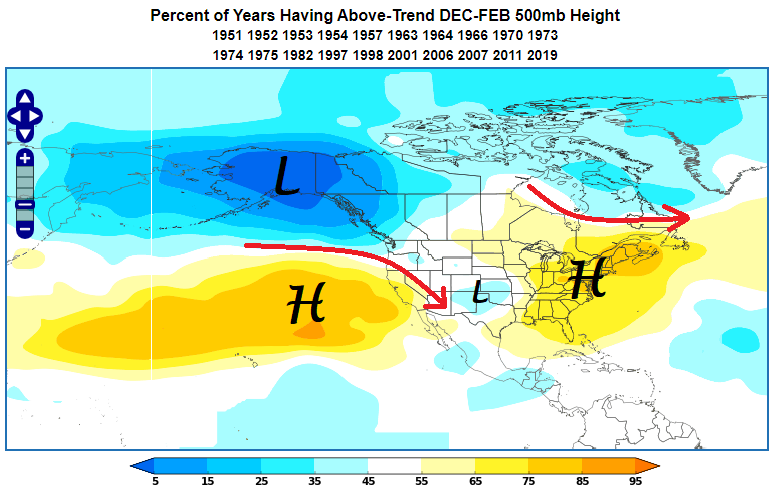
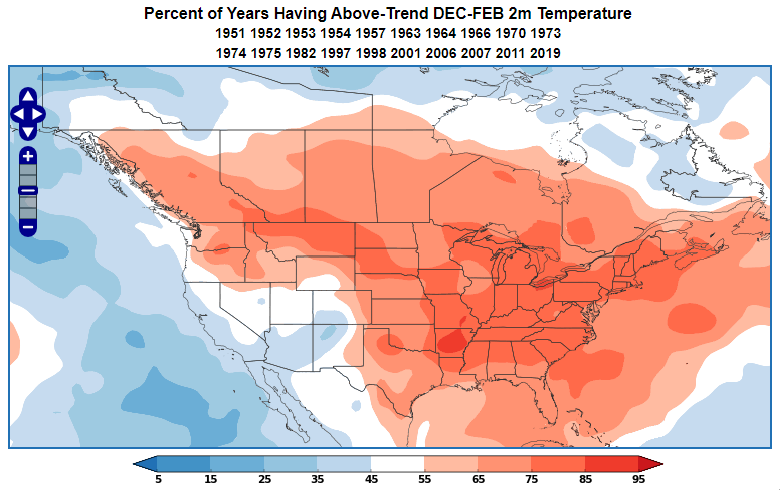
During the negative phase of the EPO in wintertime, the Central and Eastern US is more likely to see below normal temperatures, with above normal temperatures more likely in the West and particularly the Southwest (Figure 10).
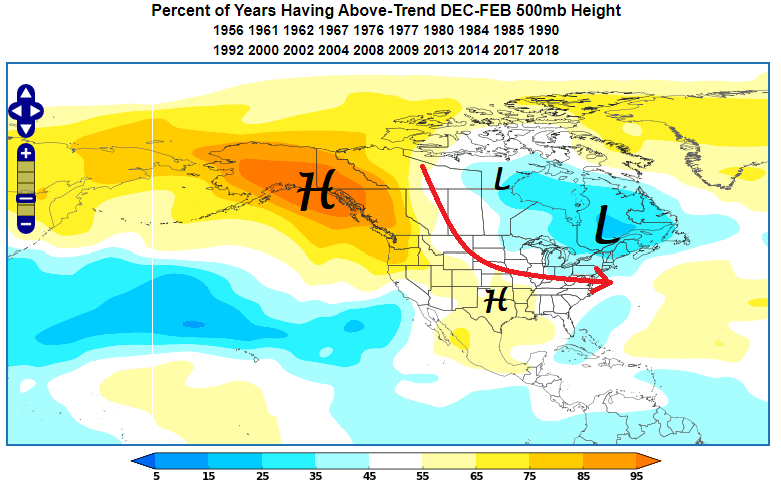
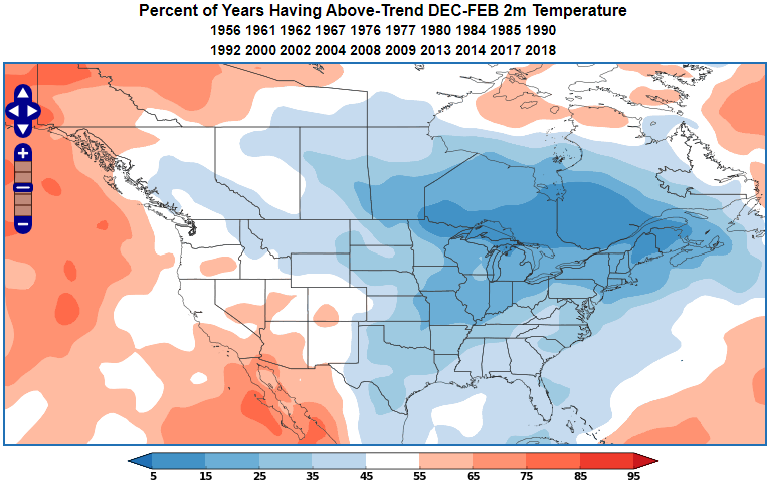
The PNA is largely driven by the pressure pattern over the Aleutian Islands, which forms a dipole with the pressure over Western Canada. The 500mb maps below show a positive PNA occurs when we see low pressure over the Aleutians and, in winter at least, Western Canada ridging, and a trough downstream over the Southeastern US.
During the positive phase of the PNA in the wintertime, the Southern and Eastern US are more likely to see below normal temperatures, with above normal temperatures more likely in the West and Northwest (Figure 4).
At the same time, the Northern Rockies and the Midwest are likely to be drier than normal, while Texas, the Gulf states, and the East are likely to be wetter than normal (Figure 5).
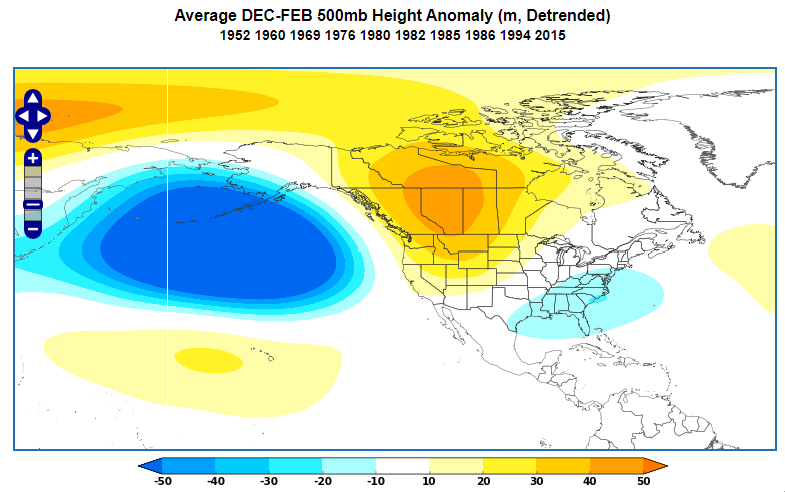
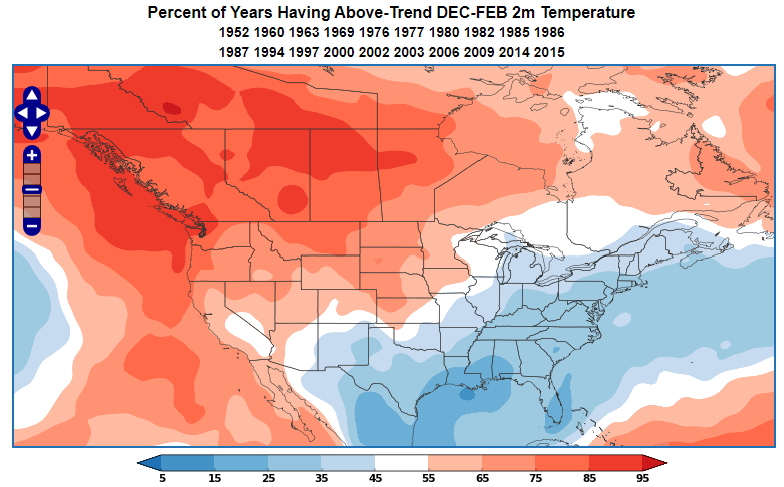
The negative phase of the PNA is more or less a mirror image of the positive phase, with high pressure centred on the Aleutians and low pressure towards Hawaii (Figure 13). We see strong troughing over Western Canada, ridging over the Southern US, but also troughing over the Northeastern US.
During the negative phase of the PNA in wintertime, the Southern US is more likely to see above normal temperatures, with below normal temperatures more likely in the North and West (Figure 15). At the same time, the Northern Rockies and the Midwest are likely to be wetter than normal, while Texas, the Gulf states, and the East are likely to be drier than normal (Figure 16).

